 W
WBallincollig Royal Gunpowder Mills was one of three Royal gunpowder mills that manufactured gunpowder for the British Government. Located in Ballincollig near Cork city in Ireland, the powder mills were originally opened in 1794 as a private enterprise, before being taken over by the British Government during the Napoleonic Wars.
 W
WCalifornia Powder Works was the first American explosive powder manufacturing company west of the Rocky Mountains. When the outbreak of the Civil War cut off supplies of gunpowder to California's mining and road-building industries, a local manufacturer was needed. Originally located near Santa Cruz, California, the company was incorporated in 1861 and began manufacturing gunpowder in May 1864. For 50 years, it was a major employer in the county, employing between 150 and 275 men. The powder works was located on a flat adjacent to the San Lorenzo River, three miles upstream of Santa Cruz.
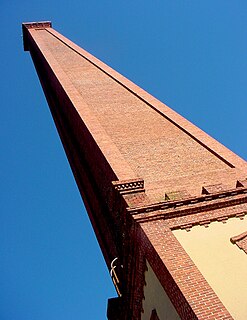 W
WThe Confederate Powderworks was a gunpowder factory during the American Civil War, the only permanent structures completed by the Confederate States of America. Colonel George Washington Rains chose the old United States Arsenal site between the Canal and Savannah River in Augusta, Georgia, as a secure inland location with good rail and water connections.
 W
WFrom 1802 to 1921, Eleutherian Mills was a gunpowder mill site used for the manufacture of explosives by the Du Pont family business, which was founded by Eleuthère Irénée du Pont. The name also refers to the house on the hill above the mills, which was the first Du Pont family home in America. In 1952, the site became an outdoor museum, and the Hagley Museum and Library was founded. The site was declared a National Historic Landmark in 1966.
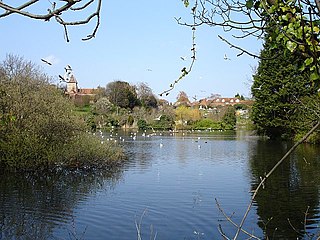 W
WFaversham, in Kent, England, has claims to be the cradle of the UK's explosives industry: it was also to become one of its main centres. The first gunpowder plant in the UK was established in the 16th century, possibly at the instigation of the abbey at Faversham. With their estates and endowments, monasteries were keen to invest in promising technology.
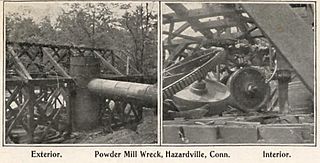 W
WThe Hazard Powder Company is a former American manufacturer of gunpowder and explosives. It was located in Hazardville within the town of Enfield, Connecticut.
 W
WLaflin & Rand Powder Company was a gunpowder and early smokeless powder manufacturer notable for producing the smokeless powder used by United States Army infantry rifles from 1896 to 1908, which included the period of development of the M1903 Springfield rifle and .30-06 Springfield cartridge.
 W
WLittleton gunpowder works between Winford and Chew Magna in the English county of Somerset, started gunpowder production around 1650 and continued until approximately 1820. It is a listed as a scheduled monument.
 W
WLow Wood Gunpowder Works was a gunpowder mill founded in Furness, England, at the end of the 18th century. It became a significant supplier, and survived as a business until taken over by Imperial Chemical Industries around 1930. The works has been disused since 1935.
 W
WThe Peters Cartridge Company was a company in Kings Mills, Ohio that specialized in gunpowder and ammunition production. Its historic buildings, built in 1916 at 1415 Grandin Road, were added to the National Register of Historic Places on October 10, 1985.
 W
WThe Poudrerie nationale de Vonges is a French powder mill established in 1691 in Vonges, Côte-d'Or. It manufactured explosives for use in quarries, mines and fireworks. During World War I (1914–18) it manufactured munitions. It expanded after the war, producing explosives for civil use. During World War II (1939–45) production was scaled back drastically, but expanded again after the war. The powder mill was fully privatized in 2008.
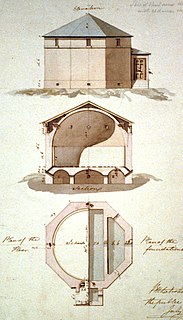 W
WA gunpowder magazine is a magazine (building) designed to store the explosive gunpowder in wooden barrels for safety. Gunpowder, until superseded, was a universal explosive used in the military and for civil engineering: both applications required storage magazines. Most magazines were purely functional and tended to be in remote and secure locations. They are the successor to the earlier powder towers and powder houses.
 W
WThe River Kent is a short river in the county of Cumbria in England. It originates in hills surrounding Kentmere, and flows for around 20 miles (32 km) into the north of Morecambe Bay. The upper reaches and the western bank of the estuary are located within the boundaries of the Lake District National Park. The river flows in a generally north to south direction, passing through Kentmere, Staveley, Burneside, Kendal and Sedgwick. Near Sedgwick, the river passes through a rock gorge which produces a number of low waterfalls. This section is popular with kayakers as it offers high quality whitewater for several days after rain. The village of Arnside is situated on the east bank of the Kent estuary, just above Morecambe Bay, and a tidal bore known as the Arnside Bore forms in the estuary at this point on high spring tides.
 W
WThe Royal Gunpowder Mills are a former industrial site in Waltham Abbey, England. It was one of three Royal Gunpowder Mills in the United Kingdom. Waltham Abbey is the only site to have survived virtually intact.
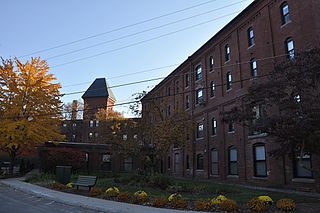 W
WThe Wamesit Canal-Whipple Mill Industrial Complex is a historic mill and canal at 576 Lawrence Street in Lowell, Massachusetts. This industrial area of Lowell, located on the Concord River, underwent a major expansion from a more modest millworks in the mid-19th century by Oliver Whipple, a manufacturer of gunpowder.